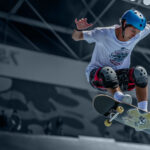We head into the dog days of August, sometimes referred to as “the sports desert” with a bit of an oasis upon us. NFL and college football training camps are starting, there is renewed interest in baseball with their rule changes, and the summer of soccer in North America continues its rise.
Lionel Messi’s debut in MLS, massive crowds turning out for the training tours and exhibition matches that elite European clubs are now doing, NWSL is in the midst of its season continuing with record attendance and viewership, and oh yes, there is the Women’s World Cup going on in New Zealand and Australia, with already record viewership, attendance and interest, despite the games being on for many people in the wee hours of the morning.
At least across Europe and North America, it appears there won’t be much sleep at night as the matches play on, and head towards the knockout stage in the coming weeks.
So from a performance perspective, what are the things keeping us up at night as we watch the matches play out? Injury and load management continue to be key, especially given the added interest and knowledge we have of the elite women’s players through our work with national teams and an increased amount of work with NWSL clubs like OL Reign, the Portland Timber and others.
Some thoughts on what to watch for as the tournament moves on and frequency of play, as well as level of depth in competition rise amongst the best of the best, with some key points pulled together from our analytics team.
Is Team USA a lock?
Not really, and that’s a good thing for the sport.
Team USA came into the World Cup as the most experienced squad of the favorites. With over 500 more international caps than their nearest rival. Not only that, but they also have the oldest squad of the favorites, almost three years older than each of Spain, England and Germany on average, and they are carrying at least 4 more players over the age of 28 than any of their competitors. While international experience is clearly a benefit when it comes to fighting for the world cup, it also presents its challenges.
Older players are more likely to be fatigued and get injured. Load management is a key issue when it comes to preparing players for a world cup, ensuring they are fresh and ready to go to mitigate fatigue and minimize injury risk.
Looking Back to France
In 2019 the USA had played by far the fewest minutes of any of the current favorites for the crown. Their players were rested, the team was able to use its experience and additional rest to their advantage as they won the title.
In 2023 it’s a bit of a different story. In 2019 the USWNT had no players that had played a “high” or “very high” number of minutes; there are now nine players who fit this category. Spain on the other hand has gone the other way. In 2019 they had 14 players who had played a very high number of minutes going into the tournament, suggesting, potentially, that the team was fatigued. The side now looks a lot fresher, with a far better distribution of minutes.
What Could This Mean?
If the USWNT has an older squad, and this older squad has played a greater number of minutes, then there is a greater chance that injury or fatigue will occur. In this scenario there is a greater risk that the USA will need to utilize a greater proportion of their squad. The USWNT has a core group of very experienced players, however there is then a considerable drop off. One of the negatives of keeping a group together is that when any of these players can’t play, the replacement is likely very inexperienced. This is the case for the USA, where eight players on the squad have fewer than 20 international caps.
In contrast, Germany seems to have done a good job of this forward planning, with 18 of their current squad having at least 20 international games. If players get fatigued and squads need to dip into their reserves, is this an advantage for others? With the younger players, are Germany, Spain, and England going to reach into that well as often as the USWNT will?
Maybe that’s a case of the glass being a bit half empty, but there is certainly some great water to try in that glass for fans of the USWNT. The increased focus on athlete development at the club level has given us a look at the next generation of stars, many of whom may be less experienced on the international front, but we are seeing them play some key roles in the early matchups and would expect more going forward. Whereas team USA suffered a few key injuries before heading to Australia and New Zealand (Becky Sauerbrun and Christen Press being perhaps the biggest) the ability to start substituting young players for quality minutes in some of the early round robin play has been key.
Why Is This Important?
Depth of global talent has significantly increased the level of competition, and closer matches across the board, especially for the veteran USWNT, are being greatly anticipated.
The one thing that we have seen, and work keenly on, is the increase in conditioning and training techniques designed to help minimize risk and maximize performance across all of women’s soccer. While injury is still a major worry and fatigue can be a factor at the highest levels of play, all our indicators show that the women of THIS World Cup are the best prepared for competition – and as we have seen so far, ready for the challenge.
The games and the performance are not something that can be easily predicted, and we are not in the prediction game, we are in the preparedness game.
Will it be disastrous for the U.S. to not come through to at least the medal stage from what we have seen, and what we know from our work and the data we have examined? Surprising, but not disastrous for the sport, as the depth continues to grow, and a larger number of national teams are now in the mix for contention.
One thing we believe is certain, however. The elite athletes across the board, and the millions watching around the world, will be the overall winners as play continues to progress. There are no locks in sports, and this Women’s World Cup has the least amount of certainty for any club, especially the traditional powers.
The oasis in what was the sports desert is more fruitful than ever. Let’s watch and enjoy the matchups.
Minutes are based on quintiles for minutes played going into the World Cup. Very low corresponds to the bottom 20% of player minutes, Low = 20-40%, Medium = 40-60%, High = 60-80% and Very High is the top 80% of player minutes. The numbers are based on the Top 10 sides going into this world cup, specifically, 'USA', "England", "Spain", "Germany", "Australia", 'France', 'Sweden', 'Netherlands', 'Brazil' and 'Japan.'
# # #
I share my thoughts on sport’s most impactful developments and news on an ongoing basis. I welcome your feedback on Twitter or at stephen@kitmanlabs.com.





